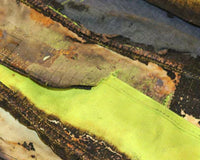The real danger from an arc flash comes from the fact that there is more than one hazard to contend with at the same time. For instance, an electric explosion produces extreme heat that is four times hotter than the sun; gives off a blinding light; causes a fireball that can ignite clothing; bangs loud enough to rupture ear drums; and fires off molten shrapnel towards the face.
Head & Face Protection
Because of the extreme heat experienced in an arc flash, it impacts upon your entire body and everything you need to wear. For this reason it is important to ensure that all areas of your body are covered with both arc rated clothing and personal protective equipment (PPE) that will protect you from the heat energy – Learn more about PPE Categories here.
These need to be able to absorb the heat whilst also protecting your skin from a 20,000 degree Celsius sunburn. For this reason the materials used need to have an Arc Thermal Performance Value (ATPV) that is suitable for the level of arc flash exposure, as well as being Flame Resistant (FR).
The main part of the body that needs to be protected from severe burns is the face, as it there is the potential for a lifelong impact. An arc flash can result in 2nd and 3rd degree burns to the face, ears, and head. There is also the additional risk of going blind from the extremely bright light that is generated from an electric explosion as well as deaf from the loud sound produced which can reach up to 160 decibels.
During an arc flash, because of the sheer amount of light that is produced, it is likely to result in temporary, if not permanent, blindness. To make sure you have adequate protection for your eyes, you’ll need to wear an arc flash face shield. The technology in it is specially designed to protect your eyes from the intense and harmful light that’s emitted from an electrical explosion. This is why face shield are tinted.
The sound produced during an arc flash is very loud, so in order to combat that you’ll need to wear some sort of ear protection. Although there are different types of hearing protection available, ear plugs are the most practical. These should be worn underneath a balaclava or arc flash hood.
When an arc flash happens it creates a large explosion, sending pieces of molten copper flying through the air. Even with an arc face shield on, you should still wear a pair of safety glasses as, unlike a face shield, they have been designed to withstand ballistics.
Making sure that all of your head protection, including face shield, balaclava or arc flash hood have an ATPV that is suitable for the arc flash hazard and are FR is vitally important in order to remain safe and protected at all time.
Hand Protection
When it comes to hand protection for an electrical explosion, it’s actually relatively simple as the same latex insulated gloves that are used for a shock hazard can also be used to protect against an arc flash hazard. This is rather fortunate because most times you are exposed to an arc flash, you are also exposed to a shock hazard.
Whilst specialist arc flash hand protection protects against an electrical explosion, they only work for this type of hazard. This is why it is better to choose your gloves based on the shock hazard. After all, shock incidents are much more common than arc flash incidents. The American Society for Testing and Materials (ASTM) labelling chart is the best way to determine the correct latex insulated gloves to wear for a particular job.
In addition to the appropriately rated latex insulated gloves, you need to also select the properly sized leather protector. The good thing about leather is that not only does it protect the latex insulation from being damaged but also it offers additional arc flash protection, as it is a great protector from heat energy.
60 Seconds to save a life
Within 60 seconds you can:
• Check you have all your PPE equipment to hand
• Test your Arc Gloves - blow into them before use and listen for any air holes
• Insert your Ear plugs
• Put on your Arc rated Balaclava
• Put on your Safety Glasses
• Put on and fasten Arc Helmet/Visor
• Put on Electrical Gauntlets and Leather Over Protectors
We don't recommend to rush the process but in 60 seconds you can ensure your hands, face, ears and eyes are all protected. When working on or near live electricity, work with your senses in mind.





